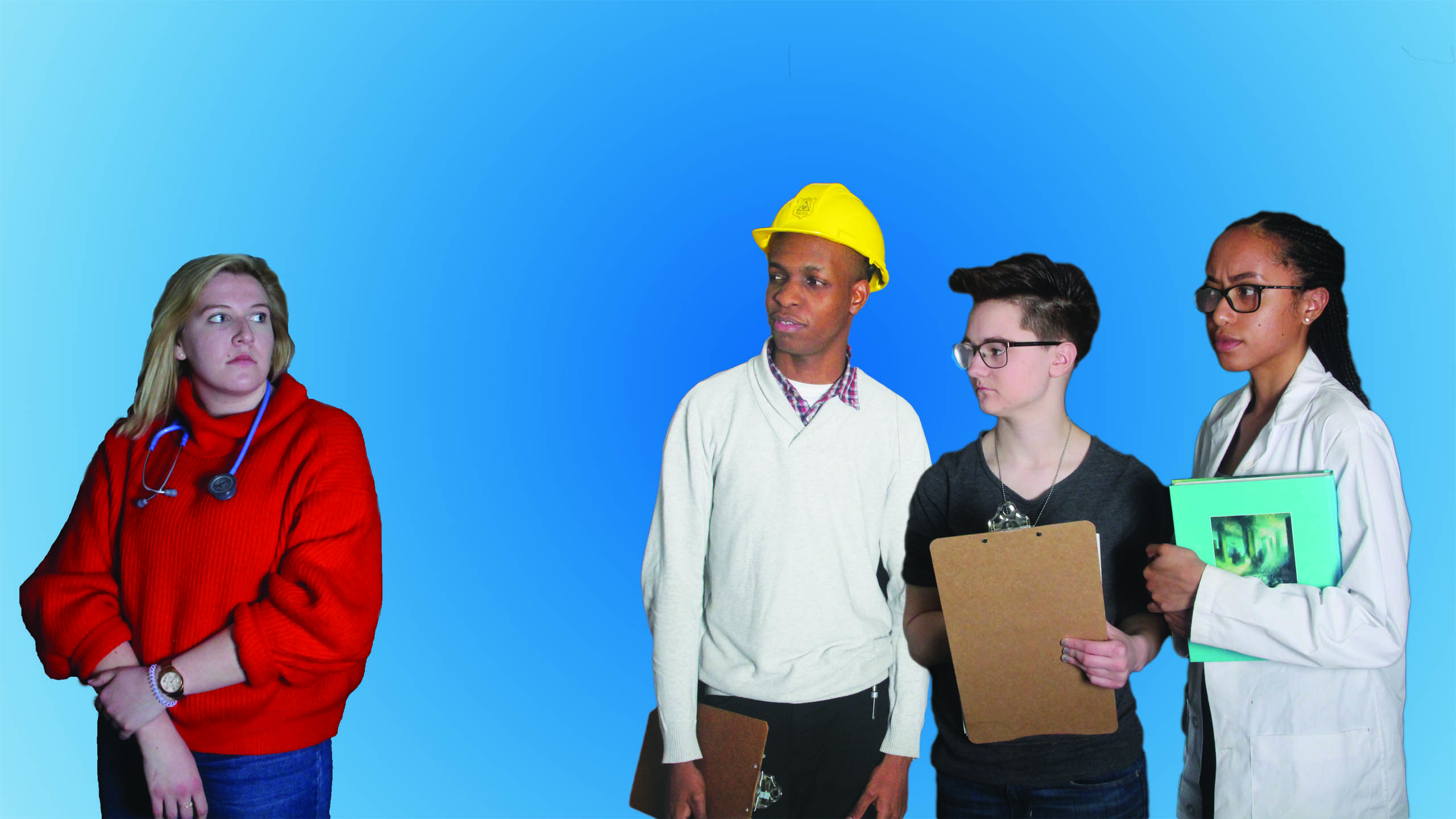By Kosalan Kathiramalanathan
The nursing program at Ryerson University is categorized among programs including urban planning and disability studies under the faculty of community services, but some students question whether that’s where it belongs.
Stephanie Dietterle, a second-year nursing student at Ryerson, said nursing is more akin to Science, Technology, Engineering and Mathematics (STEM) rather than community service.
“As a nurse, you don’t just clean a patient and do hands-on work. It requires a strong science background,” she said.
What is considered a STEM job varies from person to person.There’s no official resource that dictates what is and what isn’t STEM. Statistics Canada lists professions like pharmacology and biology as STEM, but not nursing.
Some argue nursing isn’t STEM because it’s an applied science and mainly care-based, whereas most other jobs in the field, like engineering or researching, are rooted in theory and fundamentals. National Institute of Nursing Research data shows less than five per cent of nurses had PhDs in 2017, the typical education required to conduct independent research.
But Dietterle disagrees. “I have a degree in science and a lot of the courses I’m taking now I find are either the exact same or similar to what I learned in that degree, with the only difference being we also look at the aspect of care.”
“As a nurse, you don’t just clean a patient and do hands-on work. It requires a strong science background”
Required courses for Ryerson nursing students include anatomy and physiology, and assessment of the healthy individual.
Aside from studying anatomy and genetics, Dietterle said she’s learned how diseases spread and how drugs work.
“For example, [if] you go in and notice a patient’s oxygen stats are down, you don’t just give them oxygen,” she said. “You need to know if they have chronic obstructive pulmonary disease because then giving them oxygen can actually make things worse or maybe they are just not sitting up properly or they can be aspirating.”
Rani Thakoordeen, a registered nurse and clinical instructor at Ryerson, said there’s a perception that nurses only care for, rather than treat, patients. While care is a critical part of the job, she said it doesn’t diminish the role science plays.
“We are able to take the information that we learn and use it to treat the patient, which is where the scientific background comes into play,” said Thakoordeen.
Nursing isn’t considered STEM, but nurses’ coworkers’ jobs are. Kinesiologists, plastic surgeons and pharmacists are STEM jobs.
For Ferrisha Bolton-Brown, a second-year nursing student at Ryerson, care and science work hand in hand, rather than as two separate parts of her work.
“Science itself basically sets the foundation for caring for our patients. You can’t care for patients if you don’t understand the science aspect of disease and illness,” she said.
Bolton-Brown said she believes the divide between nurses who’ve graduated from college and those with university degrees is another reason why nursing is often left out.
There are two types of nurses: registered practitioner nurses (RPN) and registered nurses (RN). A nurse with a college diploma is an RPN, whereas the RN title signals a university degree, or a diploma and degree combination.
Students who graduate from the four-year collaborative nursing program at Ryerson fall into the RN category, as do graduates of Ryerson’s post-diploma nursing program.
“You can’t care for patients if you don’t understand the science aspect of disease and illness”
Students told The Eye they want their profession to be acknowledged and for nursing to be recognized for the hard work that’s required.
“I think that would definitely alter people’s views for sure,” Bolton-Brown said.
But despite the separation between the two nursing streams, Bolton-Brown said all practicing nurses require an extensive knowledge of science.
Thakoordeen also believes the gender make up of the field affects the perception of nursing. While most STEM fields are dominated by men, most nurses are women.
About 86 per cent of students in Ryerson’s undergraduate nursing program in 2016-17 were women.
“Having the field be mostly women has a stigma that it’s not as serious or as hard to begin with, unlike an engineer or mathematician,” said Thakoordeen.
The question of whether or not nursing belongs in STEM seems to have no clear answer.
Major institution and government bodies are also in disagreement. The U.S. Bureau of Labor Statistics considers nursing to be a job that is “closely related” to STEM, but the U.S. Department of Commerce’s Economics and Statistics Administration doesn’t consider nursing to be an actual STEM job.
Since nursing is often excluded from STEM fields, building bridges to the STEM community isn’t always easy, according to Bolton-Brown.
“To be honest, I have never really had the opportunity to engage with that community,” said Dietterle.
“I don’t think I would feel too welcomed [into STEM], mostly because of the bias lots of people outside of nursing have towards the program.”











Nursing
Nurses’ responsibilities vary by specialization or unit, but most share more similarities than differences. Nurses provide and monitor patient care, educate patients and family members about health conditions, provide medications and treatments, give emotional support and advice to patients and their family members, and more.Thanks for putting top notch content in article. It will encourage students to have successful career in nursing. I would like to be here again to find another masterpiece article.